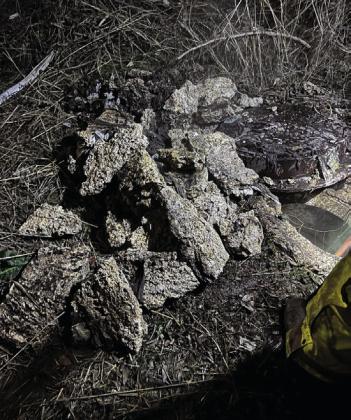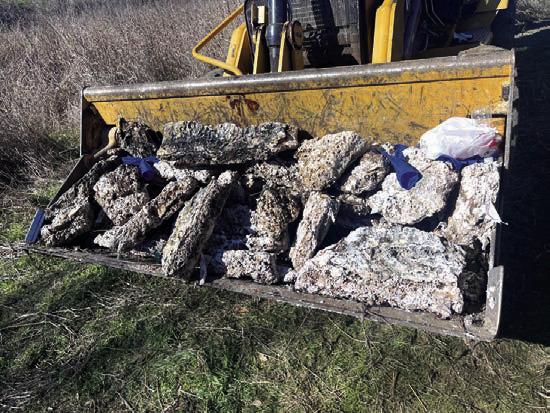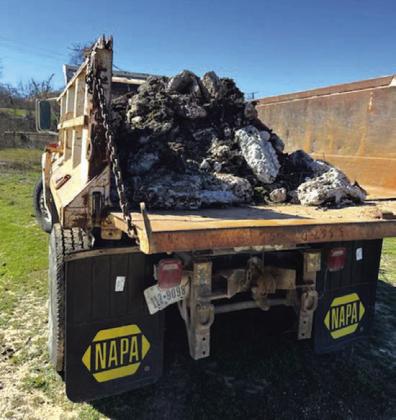Many of you made a guess at what this was. Here are some of your guesses: bat guano, Dino doo doo, silver from the legendary San Saba River silver caves, moon rocks, pyrite, an old well, petrified buffalo chips, dung, arrowheads… Read on to see what it is!
The following information was provided by City Works Director, Scott Glaze.
On January 8th, the City had a report of a slow draining sewer in the area of Pierce Street. The crews responded to the area to try to find out what was going on. Once they started opening some of the manholes up and down the line, they finally found the one downstream manhole that was slow.
That is how you find your stoppages. You go to each manhole, and the first one you find downstream of the stoppage that has little or no flow coming through shows that the stoppage is upstream from that point.
Once we had found the exact manhole, we were able to get into that manhole and see what we had, and what we had was a grease plug.
We had to work between two manholes on Highway 16 in front of Amthor Lane/4th Avenue. The primary manhole where we were working was on the south side of the driveway. We were trying to punch it out (or jet it out) to the next manhole up.
In that section of pipe, (it is a 20” pipe) we were hitting the blockage, but since we couldn’t see in there, we didn’t know what we were hitting.
As the crew would jet rod it out, they would keep getting pieces, pieces, pieces, and they were not getting anywhere close to clearing the pipe. They were getting slabs of grease out - some were 2-3 feet long, 1 ½ feet and half wide, and six inches thick. Those pieces just kept breaking loose.
At the same time, the entire grease plug was slowly moving on its own, very slowly down the pipe.
At the end of the ordeal, they had a full dump truck full of grease (SEE PIC grease plug 3) The crews worked Monday night, most of Tuesday night, and then started on it again Wednesday morning at which time they finally got it to release. It took from Monday, January 8th, to around lunchtime on Wednesday, January 10th, when the head of the grease plug started clearing and finally started to release.
What can we learn from this?
I cannot stress it enough - do not put grease in your drain. It does not matter who you are - commercial or residential. It does not matter how little you put down the drain. It is so easy to think, “Oh, my little skillet of grease won’t hurt; I'll just add some Dawn dish soap and swish it around and let it go.” That grease will re-solidify. Maybe not at your house and not in your pipes, but it will turn back from liquid to grease. And as demonstrated on January 8th, it will cause problems in the line and affect others.
So what are we supposed to do with that grease?
Let the grease sit and cool. Take paper towels and wipe out the pan very, very well, and throw the paper towel in the trash.
Collect the grease in an old coffee can or other container. Then you can dispose of the container in the trash can. Be sure to still wipe out the skillet with a paper towel - even the small amount of grease that is left in the skillet can still cause problems down the line.
Remember, if you only put even just the smallest amount of grease down the drain, it adds up.



